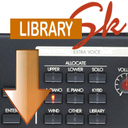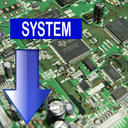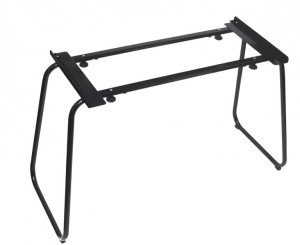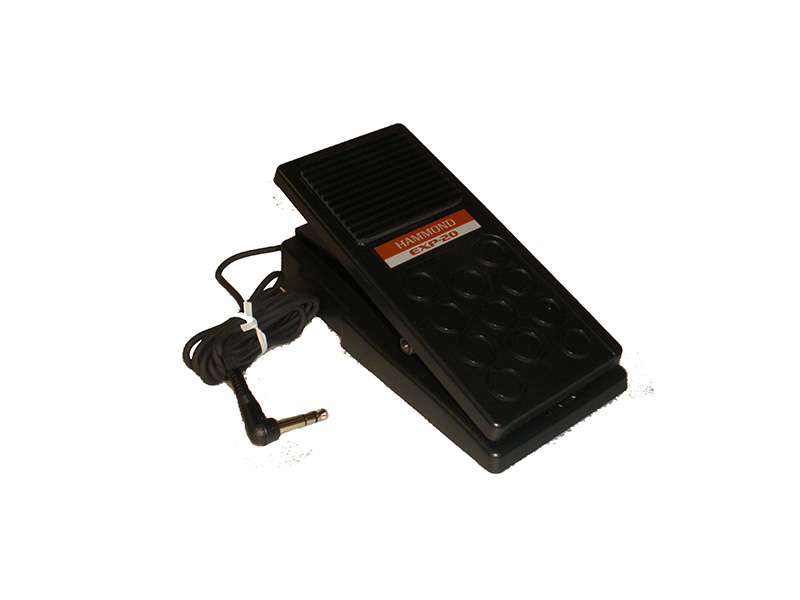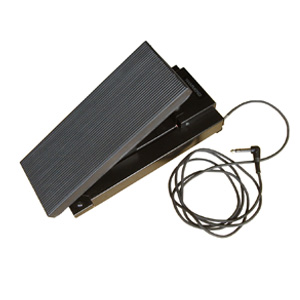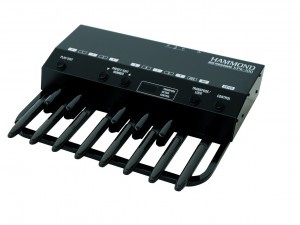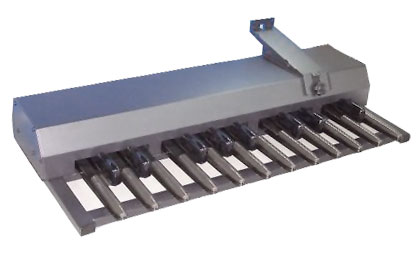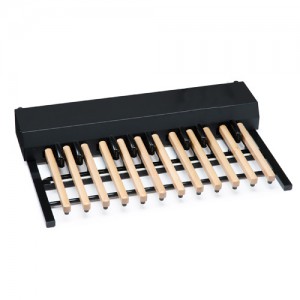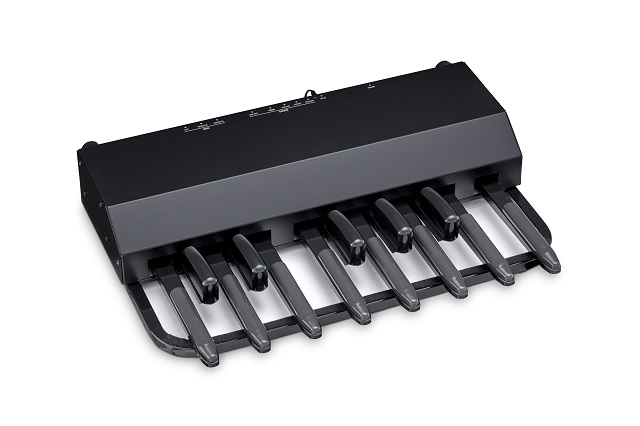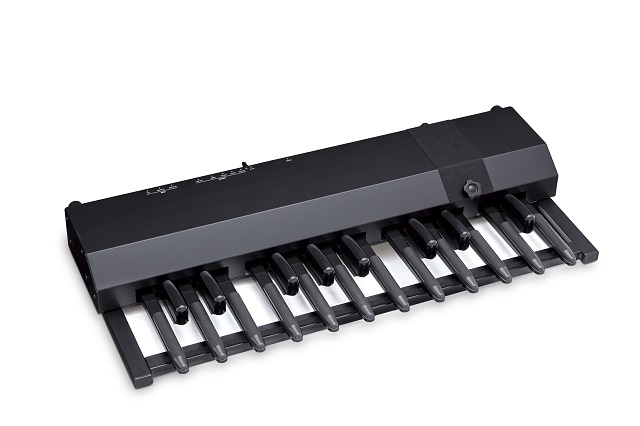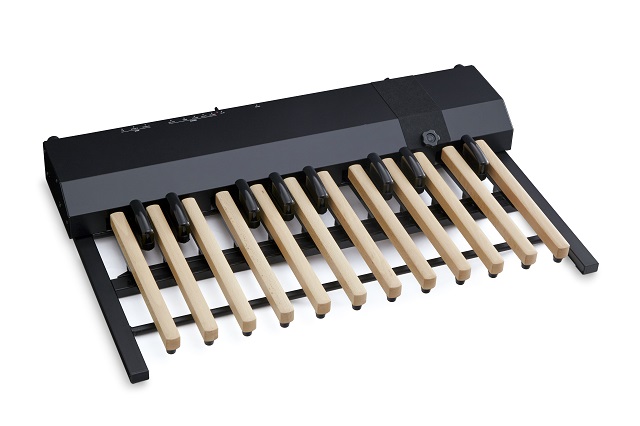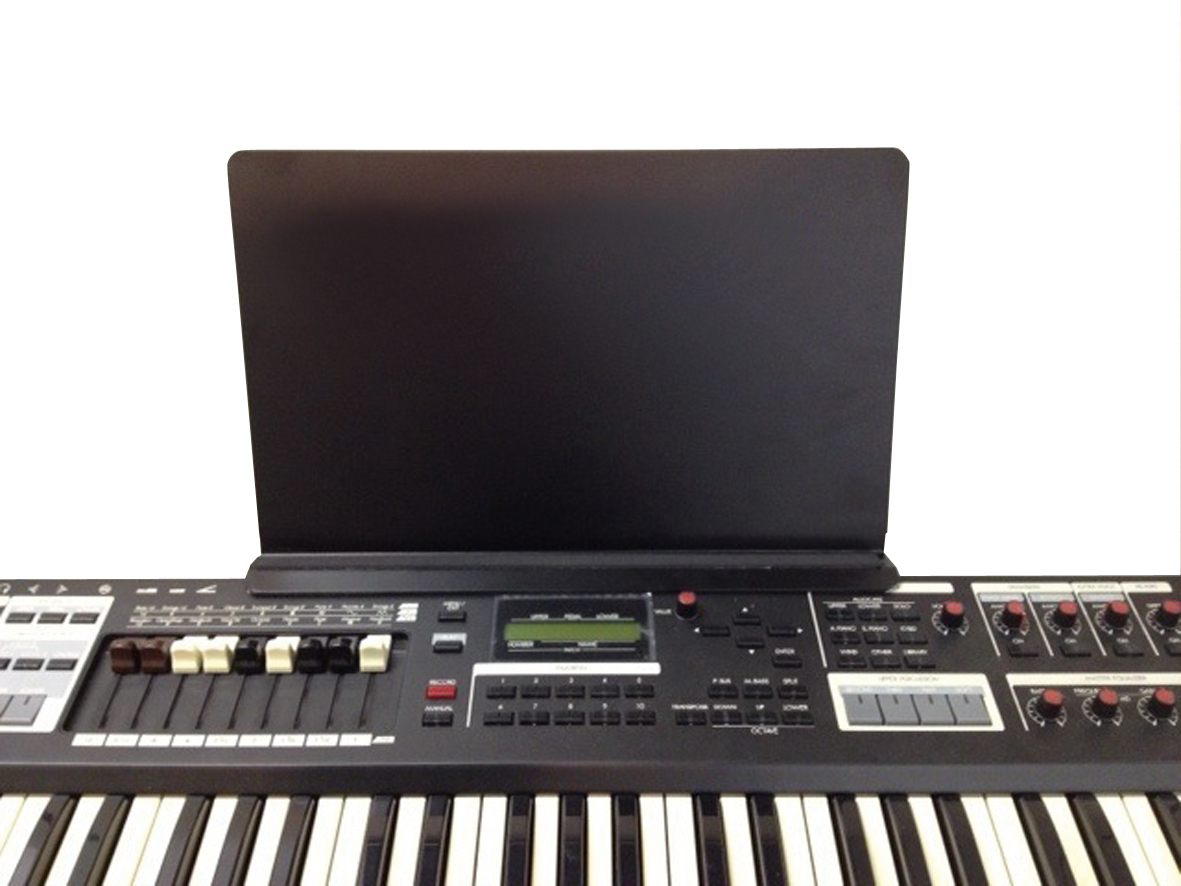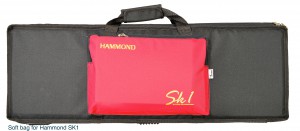Your selected product...
- Single manual 61 keys
- Authentic Hammond Organ Drawbar Sound
- Extra Voice Section
- Digital Leslie / Vibrato
- Wide Variety of Effects
- Library of Essential Keyboard Voices
- MP3 Music Player
- MIDI Master Keyboard
- Patch and Favorites
- Build-in USB port
- Small and lightweight (7 kg)
Hammond SK1
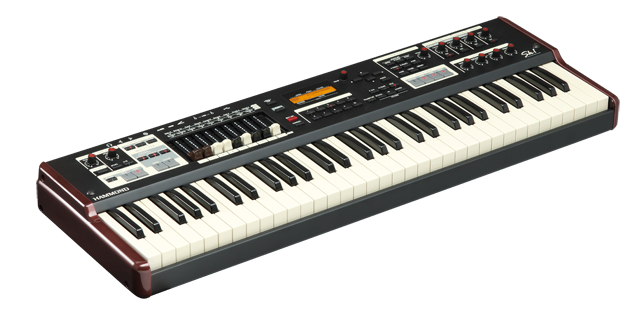
The new Hammond SK Keyboards : a splendid combination of a real Hammond and great vintage sounds...
Stage Keyboard SK1
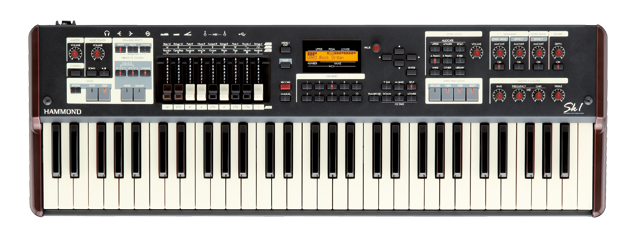

| Specifications | |
| SOUND GENERATOR | ORGAN SECTION: 2 Vase III as Digital Tone-Wheels, Transistor Organ and Pipe Organ 8 polyphony (for pedal, except Pipe Organ) 63 polyphony (maximum, on Pipe Organ) EXTRA VOICE SECTION: Vase III 63 polyphony (maximum) |
| KEYBOARDS | C1 to C6 61-keys |
| HARMONIC DRAWBARS | DRAWBARS: 9 Ptiches, Assignable for Upper, Pedal, Lower VOICING: Manuals: 6 choices (B-Type1, B-Type2, Mellow, Vx, Farf, Pipe), Variable Key-click Pedal: 4 choices (Normal, Muted, Synth1, Synth2), 5 choices Key-click |
| TOUCH RESPONSE PERCUSSION | BUTTONS: Second Harmonic, Third Harmonic, Fast Decay, Volume Soft Display ADJUSTABLE: Touch, Velocity, Decay (Fast/Slow) Level (Normal/Soft) |
| EXTRA VOICE | INSTRUMENTS: 6 Groups (A.Piano, E.Piano, Keyboard, Wind, Other, Library) Upgradable via Library CONTROL: Allocate Upper/Lower, Solo Group |
| EFFECTS | VIBRATO AND CHORUS: Digital Scanner Buttons: 1, 2, Chorus, Swell On, Great On OVERDRIVE: Digital, 4 programs Controls: On, Amount MULTI EFFECTS: 8 programs for Organ/Extra Voice Individually Controls: On, Amount EQUALIZER: For Organ: Bass, Mid(sweep), Treble, Tone INTERNAL LESLIE©: Advanced Digital, 2 Rotors Buttons: Bypass, Stop, Fast REVERB: Digital, 11 programs Control: On, Depth MASTER EQUALIZER: Control: Bass, Mid Gain, Mid Frequency, Treble |
| PATCHES | CAPACITY: 100 User Patches, 100 Preset Patches, manual FAVORITES: 10 buttons PATCH LOAD OPTIONS: Drawbar Registrations, Drawbar Parameters, Extra Voice, Internal Zone, External Zone, Organ Effects, EXV Effects, Reverb |
| CONTROLLERS | VOLUMES: Master Volume, Music Volume, Extra Voice Volume SWITCH: Power On/Off |
| MUSIC PLAYER | FILE FORMAT: wav (44,1KHz, 16bit Stereo), mp3 (44,1KHz, 128Kbps, Stereo) CONTROL: Song, Play/Pause |
| STORAGE | USB Flash Drive |
| DISPLAY | 20 Characters, 2 Lines |
| MIDI | TEMPLATES: 9 Templates EXTERNAL ZONES: 3 Zones, assignable to any keyboard |
| CONNECTIONS | MIDI: In, Out AUDIO: Line Out, L, R, Headphones LESLIE©: 8 pin, 1 and 3 channels available OTHER: Foot Switch, Damper Pedal, Exp. Pedal, DC IN(12V) |
| ACCESSORY (INCLUDED) | AC Adaptor, AD-1250 |
| KEYBOARD FUNCTIONS | BUTTONS: Manual Bass, Split, Octave Up, Octave Down, Lower Transpose ADJUSTABLE: Coupler Highest note, Split Point |
| DIMENSIONS | 89,4cm(W) x 30,3cm(D) x 9,9cm(H) |
| WEIGHT | 7Kg |

| ST-SK1 | Metal stand for SK1 / XK-1c | |
| EXP-20 | Expression-pedal for XK-1c, XK-4 & SK-models | |
| EXP-50 | Expression-pedal for XK & SK-models | |
| EXP-50J | Expression-pedal for XK & SK-models | |
| XPK-100 | 13-note Midi-pedalboard for XK & SK-models | |
| XPK-200 | 20-note Midi-pedalboard for XK & SK-models | |
| XPK-200L | 20-note Midi-pedalboard with longer pedals XK & SK-models | |
| XPK-130G | 13-note Midi-pedalboard with tone-generator for XK & SK models | |
| XPK-200G | 20-note Midi-pedalboard with tone-generator for XK & SK models | |
| XPK-200GL | 20-note Midi-pedalboard with tone-generator and long pedals for XK & SK-models | |
| MR-SK | Music-rest for SK1/SK2/SKX | |
| Softbag SK1 | Softbag for SK1 |
| Support | ||
| Type | Description | Action |
| Reset | Reset the instrument to the factory-defaults | Power-off the instrument. Press and hold the red 'RECORD'-button and power-on the instrument. The display will show 'HAMMOND SK1 Loading Default...' After a few seconds the display will again show the normal play-screen. |
Matthew Kaminski
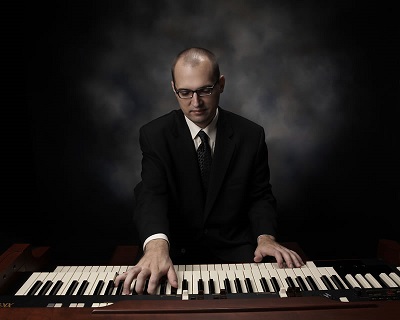 Born in Chicago, IL, Matthew Kaminski has been playing the Hammond Organ since he was five years old. Studying under Chicago jazz pianist Gordon James in his teens, Matthew was accepted into the University of Arizona's jazz studies department as a jazz pianist. There, he studied jazz with Dr. Jeffrey Haskell and Mike Eckroth, and played in the jazz ensemble and combos as well as studying classical piano with Dr. Suzanne Knosp. Matthew also attended master classes by Wynton Marsalis and Kitty Margolis, and performed with vibraphonists/marimba musicians Dave Samuels and Dave Friedman.
Born in Chicago, IL, Matthew Kaminski has been playing the Hammond Organ since he was five years old. Studying under Chicago jazz pianist Gordon James in his teens, Matthew was accepted into the University of Arizona's jazz studies department as a jazz pianist. There, he studied jazz with Dr. Jeffrey Haskell and Mike Eckroth, and played in the jazz ensemble and combos as well as studying classical piano with Dr. Suzanne Knosp. Matthew also attended master classes by Wynton Marsalis and Kitty Margolis, and performed with vibraphonists/marimba musicians Dave Samuels and Dave Friedman.Transferring to Georgia State University in 1998, Matthew studied jazz and classical piano with Dr. Geoffrey Haydon and was the principle pianist in the Georgia State Jazz Ensemble, Jazz Combos, and also performed with the Jazz Choir and Wind Ensemble. There, he had the pleasure of attending master classes by Lynne Arialle, Phil Markowitz, Greg Abate, and performed with Conrad Herwig and Scott Wendholt. In May of 2000, Matthew graduated Cum Laude with a Bachelors of Music degree with an emphasis on Jazz Studies and was the recipient of the 'Friends of Rick Bell' Jazz Scholarship.
In January of 2008, Matthew returned to G.S.U. to pursue a Master of Music degree, studying jazz piano with Kevin Bales. That April, the Georgia State Jazz Ensemble with Matthew on the piano, performed with jazz legend Jimmy Heath. In November of 2008, Matthew, continuing his education, attended a master class by trumpeter/arranger Michael Mossman, and in April of 2009, Matthew performed with jazz trumpeter Jon Faddis. In the fall of 2009, Matthew attended master classes by bassist Eddie Gomez and saxophonist Bob Reynolds. He also had the fortune of recieving a private lesson with organist Scott Giddens. Matthew graduated with a Masters of Music degree from Georgia State University in December of 2011.
Matthew has performed in various places including: Chicago (IL), Tucson (AZ), Savannah (GA), Birmingham (AL), San Francisco (CA), Auburn (AL), Louisville (KY), Athens (GA), Mobile (AL), and New Orleans (LA) (on a southeast tour with national touring guitarist, Skip Heller) as well as Atlanta, in such places as The Atlanta Jazz Festival in Piedmont Park, The Dogwood Festival in Piedmont Park, Turner Field (Home of the Atlanta Braves), The Five Spot, The Variety Playhouse, The Blue Room, Tasty World, Rathbun's Restaurant, Loca Luna, Sabroso, The 40 Watt Club, The Earl, The Eyedrum, Smith's Olde Bar, Trois, Georgia Tech, The Velvet Elvis, The Dark Horse Tavern, The Hard Rock Cafe, The Rialto, Pacific and Vine, The Blue Olive Lounge, Mojo (San Francisco), D.B.A.'s (New Orleans) and many other establishments.
Matthew has a passion for jazz organ playing and has studied with Hammond B-3 masters Ike Stubblefield, Tony Monaco, and Scott Giddens, as well a sharing the stage with fellow organists Pat Bianchi, Linda Dachtyl, Wil Blades, Todd Hildreth and guitarist Grant Green Jr. Additionally, Matthew has been a full time piano teacher since 2001 and currently teaches at The Peggy Still School of Music Alpharetta and Atlanta locations, and has taught at the college level for Georgia Tech in Atlanta, GA. Matthew continues to perform regularly in the Atlanta, GA metro area on three instruments: the Hammond organ, piano, and accordion.
In April of 2009, Matthew accepted the position of organist for the Atlanta Braves. He can be heard at every home game at Turner Field, the home of the Atlanta Braves. As the organist for the Braves, Matthew has been featured in The Atlanta Journal Constitution, Chop Talk (the official magazine for the Atlanta Braves), Fox 5's "Good Morning Atlanta" and "Good Day Extra", and has received positive "on air" reviews from Braves announcers' Don Sutton (Hall of Fame pitcher), Chip Carey, Joe Simpson, and Jim Powell.
In February of 2010, Matthew's debut CD "Taking My Time" on Chicken Coup Records (Summit Records) is released featuring Matthew on the Hammond B-3 Organ. Matthew is an Endorsee of the Hammond/Suzuki Organ Company and proudly performs on the Hammond Pro XK-System and Hammond SK1 stage keyboard, which is amplified by the Leslie 21 System Speaker.
Eliot Lewis
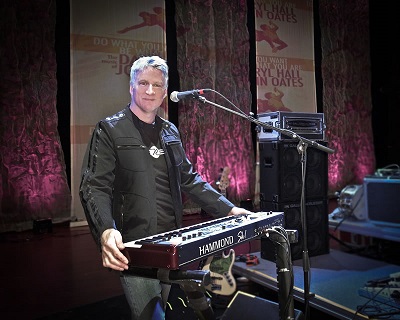 Eliot Lewis, independent artist and multi-instrumentalist, has been performing sold out shows all over the world and is currently a member of the legendary duo, Daryl Hall & John Oates. Eliot is also a featured musician on the award-winning web series and now weekly TV show "Live From Daryl's House".
Eliot Lewis, independent artist and multi-instrumentalist, has been performing sold out shows all over the world and is currently a member of the legendary duo, Daryl Hall & John Oates. Eliot is also a featured musician on the award-winning web series and now weekly TV show "Live From Daryl's House".He spent several years as a key member of the "The Average White Band". Eliot toured, wrote and also produced several songs for the scottish soul band.
Earlier in his career Eliot was signed to Warner Brothers, Sony Tunes, BMG and RCA as a songwriter and producer. He also performed on hits including Tina Turner's "The Best".
More recently he has worked with many of the top artists in the music business including: Cee Lo,Train, Joe Walsh,Todd Rundgren, Booker T, Goo Goo Dolls, Dave Stewart, Smokey Robinson, Jewel, Rob Thomas, and Grace Potter – just to name a few.
Eliot has written, performed, and produced several independent albums including his latest
"Enjoy The Ride" Selling thousands of CDs independently, he has truly become a self-contained artist. Now Eliot has taken to the stage on his own. He performs a unique one-man band solo show incorporating all of the instruments he plays into a highly entertaining event.
He has become an accomplished photographer as well, documenting many of his travels around the world into photographic art.
"After playing the SK1 this will certainly be my main gigging axe for everything keyboard I do. I will be using it on the next Hall & Oates tour as well which starts at the end of this month and goes for a few weeks. As well as any future TV appearances we do. BTW the band on LFDH and Daryl all commented on how great it sounds."
John Paruolo
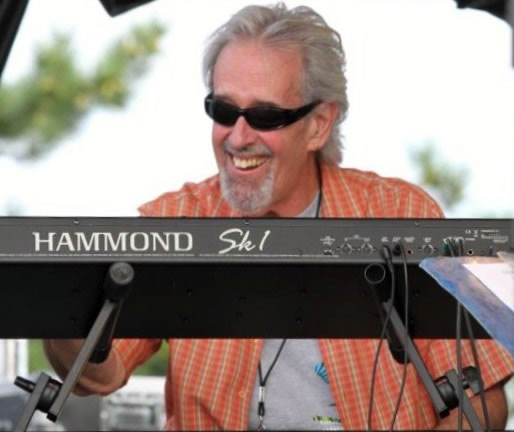 John Paruolo's home town of Chicago provided the launching pad and musical education for a flourishing 40-year career. John began playing accordion at age four which soon included piano and the Hammond B-3. Forming local bands from the age of 14, he was touring the Midwest and Southeast regularly before he graduated high school. He went on to study music theory at the Chicago Conservatory of Music.
John Paruolo's home town of Chicago provided the launching pad and musical education for a flourishing 40-year career. John began playing accordion at age four which soon included piano and the Hammond B-3. Forming local bands from the age of 14, he was touring the Midwest and Southeast regularly before he graduated high school. He went on to study music theory at the Chicago Conservatory of Music.One of John's local bands, Eddie Boy, received a contract from MCA Records and John was off to LA for the next 25 years, where he recorded with numerous acts and producers, including Richard Perry and Jim Ed Norman.
In 1980 John became a founding member of Jack Mack and the Heart Attack, a group that quickly rose to be the go-to band for Hollywood A-listers that embraced their sound. Fan Penny Marshall convinced Laverne & Shirley producers to write a segment that featured the band on the eve of their Full Moon/Warner Brothers release "Cardiac Party", produced by Glenn Frey of the Eagles. They were invited to play celebrity weddings, parties, fundraisers, film openings and Grammy parties.
Jon Hammond
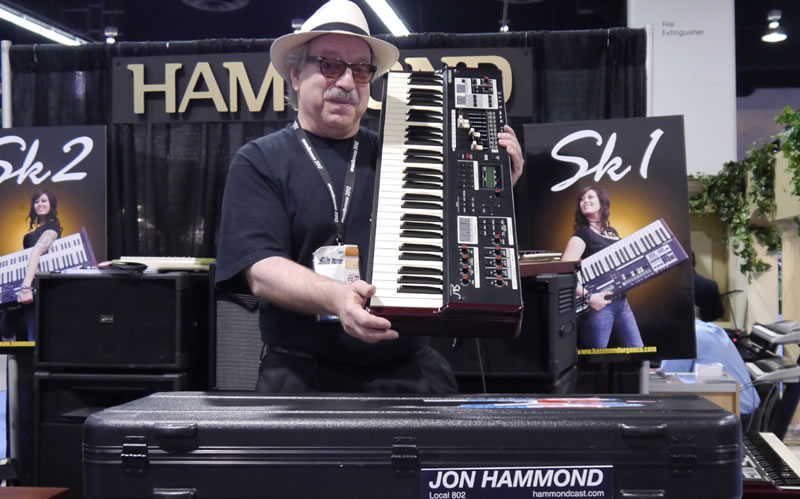 Jon began his musical career at age 12 in the San Francisco Bay Area playing organ and accordion in bands and solo engagements, first recording studio dates 1968 when he met Robert Moog who personally delivered the Moog III to San Francisco Radical Laboratories where Jon was working at the time and jamming daily with members of Quicksilver Messenger Service, he next joined original rock band Hades with which he played until moving East to attend Berklee.
Jon began his musical career at age 12 in the San Francisco Bay Area playing organ and accordion in bands and solo engagements, first recording studio dates 1968 when he met Robert Moog who personally delivered the Moog III to San Francisco Radical Laboratories where Jon was working at the time and jamming daily with members of Quicksilver Messenger Service, he next joined original rock band Hades with which he played until moving East to attend Berklee.Playing 7 nights a week in Boston's notorious Combat Zone next lead to touring with successful show band Easy Living and then became house organist at the exclusive Wychmere Harbor Club Cape Cod MA where he played private parties for Tip O'Neill Speaker of The House. Returning to SF for a reunion concert in 1980 with Eddie Money and members of Tower of Power, next Jon moved to Europe where he lived and played for a number of years, still playing annually where he has an enthusiastic following. Jon began hosting his own TV show "The Jon Hammond Show" in 1984 and is now in 27th year on cable TV in Manhattan and heard daily on KYOU Radio HammondCast Show with regular appearances at international trade shows.
Peter Galinari
 At age 8, Peter began his musical career playing the keyboards.
At age 8, Peter began his musical career playing the keyboards.Peter utilizes both his rock and blues skills to create his own unique style of phrasing and technique. Due to his limitations of not having the needed space for a piano being raised in Brooklyn, NY apartment's, he had to settle on electronic synthesizers/organ. Typically you start your keyboard training on the piano but this was not in Peter's case. Because of this, Peter over extended his right hand capabilities and has been known for his blistering rock riffs and hammering on the keys. His blues phrasing on the Hammond Organ have a strong rock influence which people have enjoyed both in the blues and rock world.
Peter's recording and performing credits include: Richie Scarlet (Ace Frehley's Comets, Mountain), Dennis Dunaway (Alice Cooper), Leslie West & Mountain, Carmine Appice (Vanilla Fudge), Anton Fig (David Letterman), Ron 'Bumblefoot' Thal (Guns n Roses), John Regan (Peter Frampton, The Stones, David Bowie), Matt Beck (Matchbox20), Larry Hoppen (Orleans), The Sundown Band.
Rob Martucci
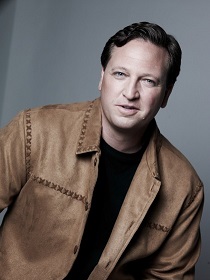 A variety of genres and musical styles were an early influence on Rob during his childhood years. Growing up around the Chicago music scene brought the sounds of jazz and blues to him. His studies of jazz, classical and gospel piano along with his take from the Chicago music scene has become in itself his signature sound. This sound can be heard in his composition, as well as in his performance. Today his music can be heard in the smooth jazz, adult contemporary, and country music formats.
A variety of genres and musical styles were an early influence on Rob during his childhood years. Growing up around the Chicago music scene brought the sounds of jazz and blues to him. His studies of jazz, classical and gospel piano along with his take from the Chicago music scene has become in itself his signature sound. This sound can be heard in his composition, as well as in his performance. Today his music can be heard in the smooth jazz, adult contemporary, and country music formats.>br>At age five, Rob began studying classical piano. Considering his lessons came from a nun at a convent, he was introduced to gospel hymns as well. Infatuated with the works of Chopin and Mozart, he pursued his studies with a passion and began composing his own melodies early on.
A product of fifties generation parents, Rob was surrounded by the sounds of Elvis Presley, Bill Hailey, Chuck Berry and Jerry Lee Lewis. "My first inspiration came from a player piano roll when I was around four or five. It was 'Great Balls of Fire'. I guess that's what did it for me. There was a lot of music played in our house. From an early age I can still picture my parents putting records on a turntable that was attached to the wall. From that turntable I heard the greatest thing ever, I heard boogie-woogie. So I tried to copy each lick, note for note, for hours. While I would play to the records, every now and then my parents would break out and dance for us kids, those were good times."
Venturing in and out of Chicago jazz and blues clubs as a young adult prompted Rob to study jazz piano. Soon after he was asked to sit-in with local cats, where he began to cultivate his style. He formed his own contemporary jazz band and played the Chicago circuit for sold out audiences in clubs and festivals.
"I remember seeing Ramsey Lewis on New Years Eve at the Coyote Club and just sitting there watching him mold several genres of music all together in one song. Around the same time I saw Ray Charles at the Chicago Theatre and he was doing the same thing, piecing together all of the styles of music that I had learned and loved, together to create one song. At that point, that's what intrigued me, and that's what I set out to do."
In 1992 Rob released his first original CD of smooth jazz instrumentals. It received immediate airplay on WNUA 95.5 in Chicago. His follow up CD "Beyond The Heart" also received airplay, but this time on a national level. From this notoriety he had the opportunity to share the stage with several popular names in jazz. The next CD "Stay Awhile" a solo piano project, made it to the top 10 in adult contemporary radio. Always a fan of holiday music, Rob also recorded a Christmas CD made up of his own arrangements. The recording includes an original track entitled "Santa Claus Is Rocking Tonight".
Since then, Rob has expanded his writing into the country music genre. His songs caught the eye of Nashville recording artist Billy Childers. He penned the title track to Billy's CD "A Man's Gotta Do What A Man's Gotta Do". Country music star Jamie Oneal joined the project and is featured on Rob's ballad "This Night". Also produced on this CD are Rob's traditional country tracks "I Feel So All Alone" and "Cowboy Blues". 2008 has been a break-through year for Rob who is currently touring with Billy Childers. Together they had the opportunity to open for Kenny Chesney's Poets and Pirates Tour in June at Chicago's Soldier Field. They were also on the Main Stage bill at Country Thunder in July. Fall and winter brings them to Las Vegas for the PBR events and the National Rodeo Finals.
This summer Rob was also given the opportunity to record a CD at the legendary Sun Studio in Memphis, allowing him to capture the spirit of his idols, Jerry Lee Lewis and Elvis Presley.
"Songwriting is something great in my life. The piano is my tool to work at it with. In the end it's all about happiness. Music is my happiness."
Macie Stewart
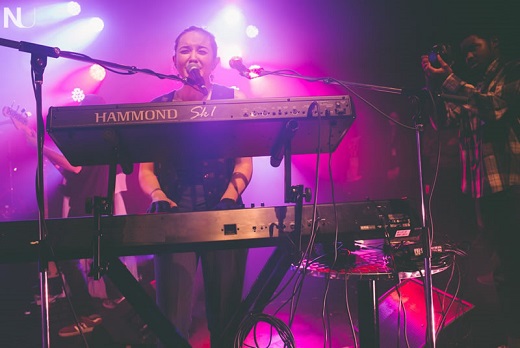 At the age of 20, Macie Stewart has already had her first national television appearance on Conan O'Brian, played legendary festivals such as Lollapalooza and Coachella, and received a write up in Rolling Stone and the New York Times. This is just the beginning for her. She started playing classical piano at the age of three and found that music was her biggest passion. Known for her skills as a versatile keyboardist, she is also a singer, songwriter, violinist, and guitar player.
At the age of 20, Macie Stewart has already had her first national television appearance on Conan O'Brian, played legendary festivals such as Lollapalooza and Coachella, and received a write up in Rolling Stone and the New York Times. This is just the beginning for her. She started playing classical piano at the age of three and found that music was her biggest passion. Known for her skills as a versatile keyboardist, she is also a singer, songwriter, violinist, and guitar player.At the age of 15 Macie began playing in the Chicago band Kids These Days. Their diverse sound spanned between Jazz, Rock, Hip-Hop, and many other genres to create something unique and ear-catching. KTD brought the band recognition from many big names such as Questlove, George Clinton, and even Jeff Tweedy who helped produce their debut "Traphouse Rock".
Macie Stewart currently resides in Chicago where she plays gigs and teaches regularly. These days she finds herself playing with her own musical projects such as Sikiyadigo and her main focus, Marrow. She often plays venues around Chicago, and regularly teaches individual piano and violin lessons as well as ensemble classes.
"The Hammond SK1 has expanded my keyboard presence on stage far beyond any other keyboard I've ever used. Its versatility and portability make it a professional touring musician's best friend. Of all of the Hammond stage models, the manual bass on the SK1 is the best yet. What makes this keyboard truly great are the classic Hammond organ sounds, the Rhodes, Wurlitzer, Clavinova, and synth patches that rival any other stage keyboard available today. I will definitely be using the Hammond SK1 for all of my upcoming tours and appearances."
Hazen Bannister
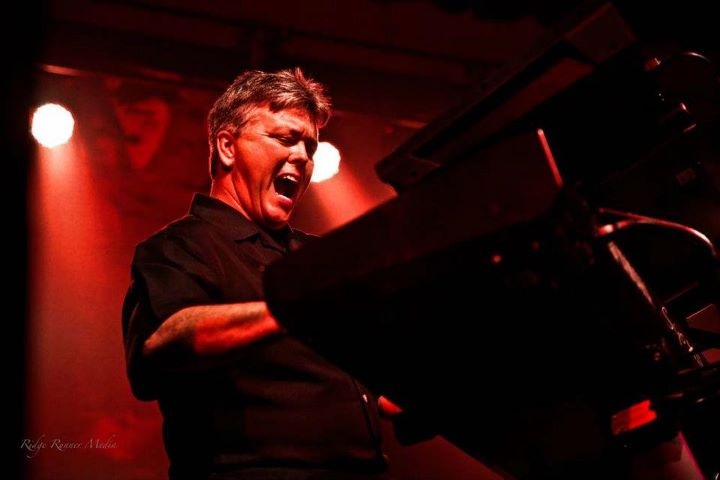 Hazen is the jazz piano professor, in the Department of Performing Arts, at Clemson University. Hazen studied classical piano at Lander University, and jazz piano at Berklee College of Music. Hazen also served as an instructor of piano, and jazz studies at the University of South Carolina-Upstate. He has toured and recorded with many national recording artists since the seventies, and is currently the keyboardist in the jazz/fusion group Watson's Riddle. Hazen has been a Hammond fan since the seventies, touring with a C3, and is now using the new SK1.
Hazen is the jazz piano professor, in the Department of Performing Arts, at Clemson University. Hazen studied classical piano at Lander University, and jazz piano at Berklee College of Music. Hazen also served as an instructor of piano, and jazz studies at the University of South Carolina-Upstate. He has toured and recorded with many national recording artists since the seventies, and is currently the keyboardist in the jazz/fusion group Watson's Riddle. Hazen has been a Hammond fan since the seventies, touring with a C3, and is now using the new SK1.Kyle Flynn
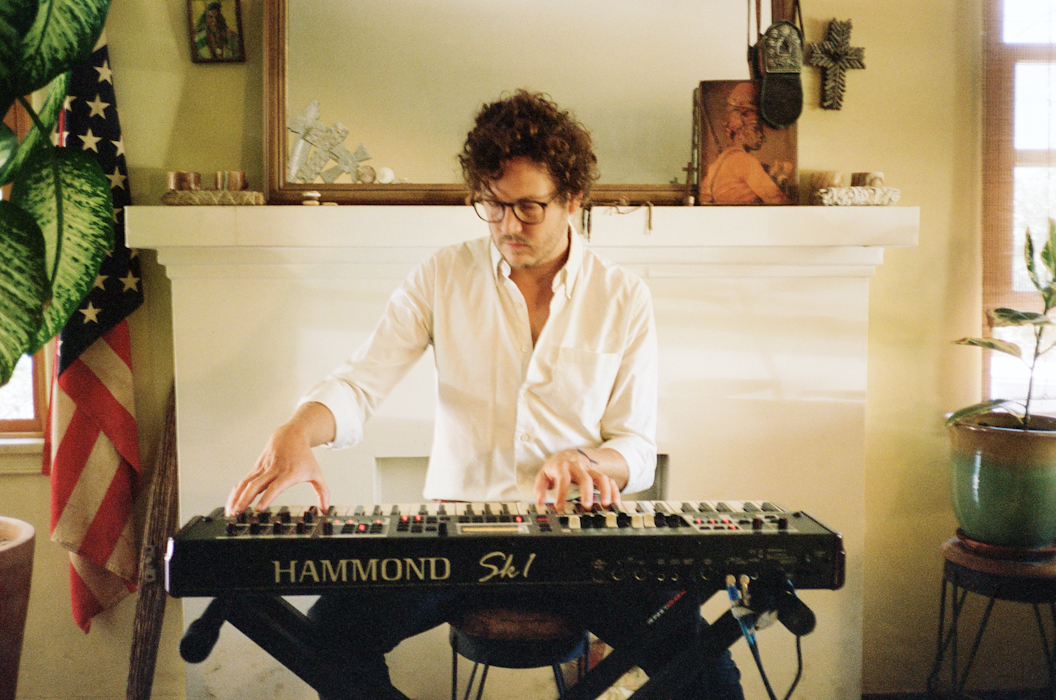 Though the Los Angeles based Kyle Flynn is a professional pianist/organist and touring member of the band Father John Misty, his relationship with keyboard instruments has had it's ups and downs. His mother might tell you that as a child, Kyle had to be dragged kicking and screaming to his classical piano lessons. Kyle is not proud of this. In his defense, his favorite band at that particular time, Metallica, didn't feature a lot of piano. Eventually he made a deal with his parents: if he continued with piano through the 9th grade, they would help him buy an electric guitar (preferably one with cool-looking, pointy ends). So, Kyle stuck it out — and he actually took it seriously. Because if there was one thing he hated more than being forced into piano lessons, it was public embarrassment. And since group recitals were part of the lessons deal, Kyle had to practice...ba lot. Finally, Kyle hit high school and dropped the piano like a bad habit. Soon, he was having a really nice time playing guitar in bands of various genres all over Seattle (where he grew up). But, he began to notice something: there were a lot of really, really good guitar players out there. Like, an excessive amount. You couldn't throw a rock without hitting someone shredding. (Kyle would like to point out that he's no slouch on the guitar either). He also began to notice something else: people kept asking him if he could play piano. So, Kyle, having taken intro to econ. in college and thus understanding (sort of) the properties of supply and demand, began playing a little less guitar and a little more piano. Then, even less guitar and even more piano.
Though the Los Angeles based Kyle Flynn is a professional pianist/organist and touring member of the band Father John Misty, his relationship with keyboard instruments has had it's ups and downs. His mother might tell you that as a child, Kyle had to be dragged kicking and screaming to his classical piano lessons. Kyle is not proud of this. In his defense, his favorite band at that particular time, Metallica, didn't feature a lot of piano. Eventually he made a deal with his parents: if he continued with piano through the 9th grade, they would help him buy an electric guitar (preferably one with cool-looking, pointy ends). So, Kyle stuck it out — and he actually took it seriously. Because if there was one thing he hated more than being forced into piano lessons, it was public embarrassment. And since group recitals were part of the lessons deal, Kyle had to practice...ba lot. Finally, Kyle hit high school and dropped the piano like a bad habit. Soon, he was having a really nice time playing guitar in bands of various genres all over Seattle (where he grew up). But, he began to notice something: there were a lot of really, really good guitar players out there. Like, an excessive amount. You couldn't throw a rock without hitting someone shredding. (Kyle would like to point out that he's no slouch on the guitar either). He also began to notice something else: people kept asking him if he could play piano. So, Kyle, having taken intro to econ. in college and thus understanding (sort of) the properties of supply and demand, began playing a little less guitar and a little more piano. Then, even less guitar and even more piano.Until, one day, much to Kyle's surprise, he was touring the world with a diverse assortment of bands on big labels like Columbia Records and Universal... and he was playing keys. To top it all off, while Kyle was opportunistically filling the Seattle rock scene's piano player void, he had slowly but surely fallen in love with anything that used black and white keys to make noise. The only person more shocked by this flip flop than Kyle was his mother (who still shoots Kyle "I told you so" looks every once and a while). If his parents were so on point re: the piano, what else could they have been right about?
So, to summarize: in one of life's many ironic twists, Kyle has kept a roof over his head for the last decade by playing (and loving) the very instrument he vehemently shunned as a child. He still likes Metallica though.
Kyle is a big B-3 fan and has found the SK1 an incredible boon to his touring setup as it is extremely portable and sounds like a million bucks.
Christian Matthew Cullen
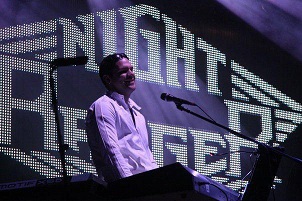 Christian Matthew Cullen (Chicago, IL) started his professional career as a session musician and sideman for Jim Peterik (Ides Of March, Survivor) in his Wold Stage band where he gained the opportunity to play with notable rock artists such as Alan Parsons, Don Barnes (.38 Special), Kevin Cronin (REO Speedwagon), Kip Winger, Joe Lynn Turner (Deep Purple, Rainbow), Mickey Thomas (Starship), and Kelly Keagy (Night Ranger).
Christian Matthew Cullen (Chicago, IL) started his professional career as a session musician and sideman for Jim Peterik (Ides Of March, Survivor) in his Wold Stage band where he gained the opportunity to play with notable rock artists such as Alan Parsons, Don Barnes (.38 Special), Kevin Cronin (REO Speedwagon), Kip Winger, Joe Lynn Turner (Deep Purple, Rainbow), Mickey Thomas (Starship), and Kelly Keagy (Night Ranger).It was from that meeting that Kelly offered Christian the keyboard chair in Night Ranger in early 2007. Joining up with original members Jack Blades and Brad Gillis, Reb Beach (Winger) and later, Joel Hoekstra (TSO, Rock Of Ages), he toured the world supporting rock giants Journey, Styx, Boston, REO Speedwagon, Peter Frampton, Heart, Alice Cooper, Steve Miller and Eddie Money.
Currently, he composes music and creates sound design for video games, animation and advertising. He has produced music for acclaimed clients such as Smirnoff, Party City, Hollywood Casino, The Kentucky Derby, Jeep, and the Florida Gators and award winning music for children's media and toys for Tomy, Alex, Infantino, Fisher-Price, Radio Flyer, and Learning Curve.
Christian can also be found making instructional videos and performing and demoing products for Hammond Organ and taking his SK1 wherever he goes.
"Hammond SK-1?! This thing is a BEAST… It's classic drawbar tones combined with Hammond's new digital Leslie sim are the most authentic I have ever heard. It even sounds great in mono! From screaming Deep Purple to that flute-y Wallflowers thing – This is my go to for every gig I do. Add on top of that an arsenal of great sounding vintage keyboards and the ability to split them across the keyboard and you have yourself a 'One stop shop for rock'. .. Oh yeah, did I mention it's only 15 lbs?"
Alan Hewitt
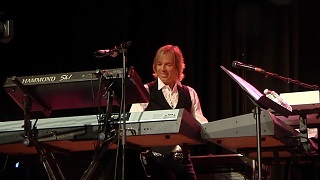 Alan Hewitt is an American composer, producer, recording and performing artist. He currently serves as keyboardist for The Moody Blues since 2010.
Alan Hewitt is an American composer, producer, recording and performing artist. He currently serves as keyboardist for The Moody Blues since 2010.Hewitt was born in Petoskey, Michigan and attended Berklee College of Music. Hewitt served as a producer for over half a decade alongside Maurice White of Earth Wind & Fire (EWF) with the 'Greatest Hits' album going platinum in 2000. Hewitt performed on the Cherry Pie record with Warrant, which went platinum in 2004.
Hewitt has released multiple solo albums and has written music for movies and television.
"Love my Hammond SK1! It's got all the things I like, from dirty distortion to true Hammond sweetness. I'm using it on tours with The Moody Blues and Justin Hayward's solo tour, and it's performed great."
Kat Lucas
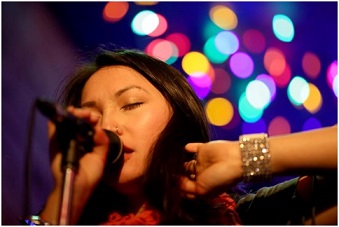 Kat Lucas is a multi-instrumentalist, singer, songwriter and producer from Toronto, Canada. She currently plays keyboards, guitar, and sings backup vocals for Grammy award winner, Pink. Kat has been on the road with Pink since 2009, and is currently on the "Truth About Love" tour.
Kat Lucas is a multi-instrumentalist, singer, songwriter and producer from Toronto, Canada. She currently plays keyboards, guitar, and sings backup vocals for Grammy award winner, Pink. Kat has been on the road with Pink since 2009, and is currently on the "Truth About Love" tour.Music has been all that Kat has ever known. She began her journey at three, training in classical, jazz, and contemporary piano and vocals. At six she started writing her own music, and performed her concerto, "Dreamcatcher" with the Toronto Philharmonia when she was fourteen. Hungry for a change, she found a new love for guitar in high school, joined her first band, and has never looked back. She has played at festivals such as Warped Tour, iHeart Radio, Isle of Wight, and Hyde Park Wireless. Her television appearances include the American Music Awards, MTV Video Music Awards, Ellen, X-Factor, The View, The Today Show, The Daily Show with Jon Stewart, VH1 Storytellers and Jimmy Kimmel. She has also been interviewed and featured on Entertainment Tonight.
Kat always seeks adventure and new experiences, trying to find ways to push the edges and break boundaries. She ventured into the J-Pop community, and has become an active writer, most recently penning a song for Japanese pop star Kumi Koda. Inspired to share her stories from a lead singer perspective and build her own project from the ground up, Belle Ayre was born. Their first EP, "Belle Ayre", was released in April 2013, and they are currently writing and recording for their first album. Kat loves nature, yoga, painting, cooking, meditation, and cuddles with her cat. She looks forward to creating more art and music to promote positive change and love in the world.
Paul Darrow
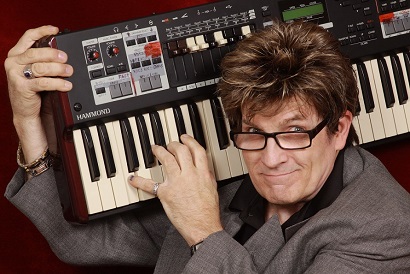 Paul is a very gifted, totally self taught might musician. He plays piano, B-3 Hammond Organ, SK1, and various Clavinets and synthesizers. He also sings in an unusual scratchy, some even say sensual baritone/tenor voice. He has done all sorts of recording for various artists both local and international. He has received an Emmy Award for his writing and is now, currently up for another for his work with young artists that was recently picked up by PBS channel 8 in Phoenix called "The Singers And Songwriter's Showcase" in conjunction with The Tempe Center For The Arts and Arizona State University with Billy Cioffi and The Monte Carlos and T.J. Hummer, head of The Creative Writing Department at ASU. Airs on Public Access channel 11 in Phoenix.
Paul is a very gifted, totally self taught might musician. He plays piano, B-3 Hammond Organ, SK1, and various Clavinets and synthesizers. He also sings in an unusual scratchy, some even say sensual baritone/tenor voice. He has done all sorts of recording for various artists both local and international. He has received an Emmy Award for his writing and is now, currently up for another for his work with young artists that was recently picked up by PBS channel 8 in Phoenix called "The Singers And Songwriter's Showcase" in conjunction with The Tempe Center For The Arts and Arizona State University with Billy Cioffi and The Monte Carlos and T.J. Hummer, head of The Creative Writing Department at ASU. Airs on Public Access channel 11 in Phoenix.There is no lack of drive or ambition when it comes to Paul and his lifelong passion, Music. It is a gift that he does not take lightly...
Paul plays a variety of styles with skill and a ton of technique, along with his own fusion of funk, R&B, Blues and Jazz. He has played since age 5 and is now 56. Yes , Mr. Darrow's son knows a million tunes... and he is not afraid to use them! Combine all of these assets with some of the "biggest ears" in town, (which means he is immursed in the music and can improvise and lock in to a groove that just gets deeper and deeper. It is what seperates the Men from the Boys. Playing it like you own it.) and extremely quick reflexes and instincts and he can actually sit in on most gigs and play them. You would think he had been playing with the band for a long time... He has been referred to by some of his peers as "The Phenomenon"...
Lorenzo Johnson
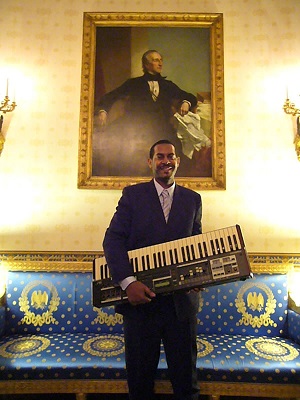 There is no doubt that Lorenzo Johnson is a multi-talented musician. This native of Alexandria, VA developed a love of music at a very early age. His energy and passion led him to begin writing lyrics and composing, organizing vocal groups and bands, directing, managing and producing. It was evident that he had a natural talent and creativity and was well on his way to making a name for himself and leaving a mark in music.
There is no doubt that Lorenzo Johnson is a multi-talented musician. This native of Alexandria, VA developed a love of music at a very early age. His energy and passion led him to begin writing lyrics and composing, organizing vocal groups and bands, directing, managing and producing. It was evident that he had a natural talent and creativity and was well on his way to making a name for himself and leaving a mark in music.Through the years, Lorenzo has continued to learn and master his craft through hard work and dedication. He studied at the Omega Studios School of Applied Recording Arts and Sciences. In addition, he attended the University of the District of Columbia and Northern Virginia Community College.
Lorenzo's drive has earned him an impressive list of accomplishments. He has produced and written on four Top 10 albums, three Grammy nominated projects and one Soul Train Award winning project. He has recorded with Ledisi, Maysa, Chuck Brown, Jazz of Dru Hill, Salt N' Pepper, Eric Darius, Tony Terry, U.S. Naval Academy Gospel Choir and Black Entertainment Television (BET) and many others. He has also performed live with world-renowned artists including Ledisi, Regina Belle, Biz Markie, Chuck Brown, Beverly Crawford, Mr. Cheeks, CeCe Peniston, Glenn Jones, Twinkie Clark, and Norman Hutchins to name a few.
Alicia McCracken Morgan
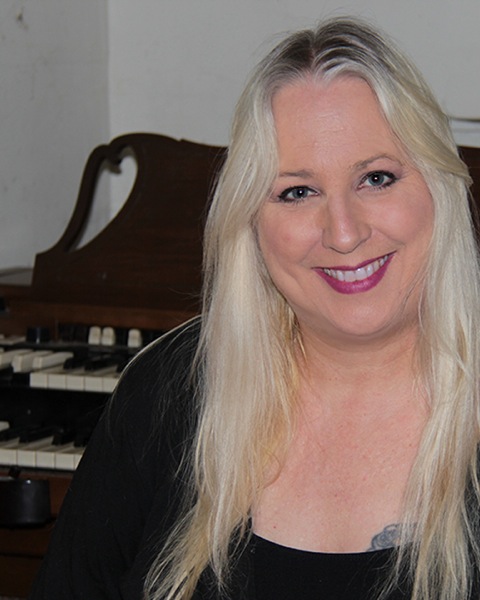 New York-born and Florida-raised, Alicia McCracken Morgan taught herself to play the piano at age nine, beginning a lifelong addiction to which there seems to be no cure. Following in the footsteps of her father, a painter and art professor, at fifteen Alicia was working at Busch Gardens in Tampa as a portrait artist, and then a cartoonist – one of the first females hired there to draw caricatures, as the prevailing wisdom was that "women weren't funny enough to be cartoonists". But music soon became her primary focus, and she began her working music career while in high school (where she was selected for the prestigious Florida All-State Sight-Reading Choir both times she auditioned, and was ranked in the top ten alto sight-readers in the state for those years) and has been a professional singer, keyboard player and songwriter ever since.
New York-born and Florida-raised, Alicia McCracken Morgan taught herself to play the piano at age nine, beginning a lifelong addiction to which there seems to be no cure. Following in the footsteps of her father, a painter and art professor, at fifteen Alicia was working at Busch Gardens in Tampa as a portrait artist, and then a cartoonist – one of the first females hired there to draw caricatures, as the prevailing wisdom was that "women weren't funny enough to be cartoonists". But music soon became her primary focus, and she began her working music career while in high school (where she was selected for the prestigious Florida All-State Sight-Reading Choir both times she auditioned, and was ranked in the top ten alto sight-readers in the state for those years) and has been a professional singer, keyboard player and songwriter ever since.Alicia is one of the few people who have actually 'run away with the circus', and regards herself fortunate to have had the chance to experience working in an American classic, the tented circus show, which is all but vanished today. After playing in the backup band for a nightclub magic revue, she ended up joining the show as a performer, working for a man who caught bullets in his teeth and doing illusions. She spent the next few years playing carnivals and circuses, returning to winter quarters in Gibsonton and Sarasota in between show seasons. In the King Brothers Circus , she learned (as all women do in the circus) to perform on the ‘web', the long white ropes that hang from the ceiling of the tent. Alicia also worked in the side show, where she was a fire-eater, Serpentina the Snake Woman and the India-Rubber Girl.
Returning to music, she moved to the West Coast, where she worked as a session singer and has a wide musical range that includes blues, soul, funk, rock, jazz, and country. Noted for her raspy blues style, Alicia's credits include recording and/or performing with such artists as Al Wilson, Delaney Bramlett, Bobby Womack, Sally Kellerman, Kevin Murphy (of Rufus), Don & Dewey, Klymaxx, Billy Vera & The Beaters, The Nelsons, Táta Vega, King Ernest, Peter Tork, Micky Dolenz and Chuck Negron. Her TV experience includes Roseanne, The Jeff Foxworthy Show, The Naked Truth, Almost Perfect, Phenom, and Sibs. She has had original songs in the feature films "Beyond Desire" and Tom Arnold's "Barhopping", and was the singing voice for Caroline Rhea in the Disney movie "Mom's Got a Date With A Vampire". Her keyboard work has been sampled for several L.A. Riot sample CDs.
Alicia's article about her experience singing on the Neil Young album "Living With War" garnered her world-wide (if incredibly short-lived) attention. She was interviewed and/or quoted by the LA Times, Editors & Publishers, the London Independent, Rolling Stone and Radio France Internationale. Recent gigs include singing for Neil Young and Oasis, and playing keyboards for smooth-jazz artist Norman Brown.
Alicia's keyboard work was nominated for a 2010 Grammy for music from the movie "Love n' Dancing".
Alicia has been in the studio with legendary producer Richard Perry, playing keyboards on the Rod Stewart album "Fly Me to the Moon"... "The Great American Songbook Volume V".
Of late, she has been indulging her love for big band jazz, playing with the Jimmy McConnell Jazz Orchestra, along with her tenor player son Sam Morgan. Her blues band The Scorch Sisters, with Francesca Capasso and Kimberly Allison, is finishing up their first CD.
Alicia produces and records in her own studio and has received an Addy advertising award for vocals and engineering. A long-time Hammond organ aficionado, she is the proud possessor of a beautiful 1964 Hammond A-102 and a 1961 251 Leslie. She taught voice, keyboards and computer recording at the Musicians Institute in Hollywood from 2005-2010, and after teaching privately for a few years, is excited to launch Voice Mama Studios with internationally-acclaimed vocalist/voice coach extraordinaire Tita Farrar.
Alicia lives in Sherman Oaks, CA with her family. She is a wife of one, mother of three, stepmom of one, concierge of three Burmese cats and a Beagle.
Mallory Lennon
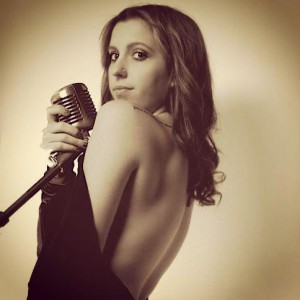 Born and raised in Chicago, Mallory Lennon is a universal musical muse. Just barely edging over the playful age of twenty one, she is a noise making, tambourine shaking, guitar playing, key pressing, banjo plucking hippie child that strives to make words seem alive. Her penchant for the written word and the power of music make her music passionate and real. She has performed all over the United States, including proclaimed events such as the Sundance film Festival in Park City, Utah, and Abbey Road on the River in Louisville, Kentucky. Mallory has recorded and performed with greats like Liberty Devitto, former drummer of Billy Joel, Mike Reno of Loverboy, and Rik Emmett of Triumph.
Born and raised in Chicago, Mallory Lennon is a universal musical muse. Just barely edging over the playful age of twenty one, she is a noise making, tambourine shaking, guitar playing, key pressing, banjo plucking hippie child that strives to make words seem alive. Her penchant for the written word and the power of music make her music passionate and real. She has performed all over the United States, including proclaimed events such as the Sundance film Festival in Park City, Utah, and Abbey Road on the River in Louisville, Kentucky. Mallory has recorded and performed with greats like Liberty Devitto, former drummer of Billy Joel, Mike Reno of Loverboy, and Rik Emmett of Triumph."I think that this sound, this album, is a vectorized personification of my authentic self. It's taken me ages to unravel the colors and whimsies of who I am, and this album is a direct representation of all that I've been, all that I am, and everything I can become."
Tracks like, "Sweeter than Wine," and "Mountain Song" sing to her sweet, delicate melodies, while efforts like, "Wind and Fire" and "Higher they Climb," whisper the sultry somber that her voice lends itself to. Lennon is set to release her debut album in the fall of 2014.
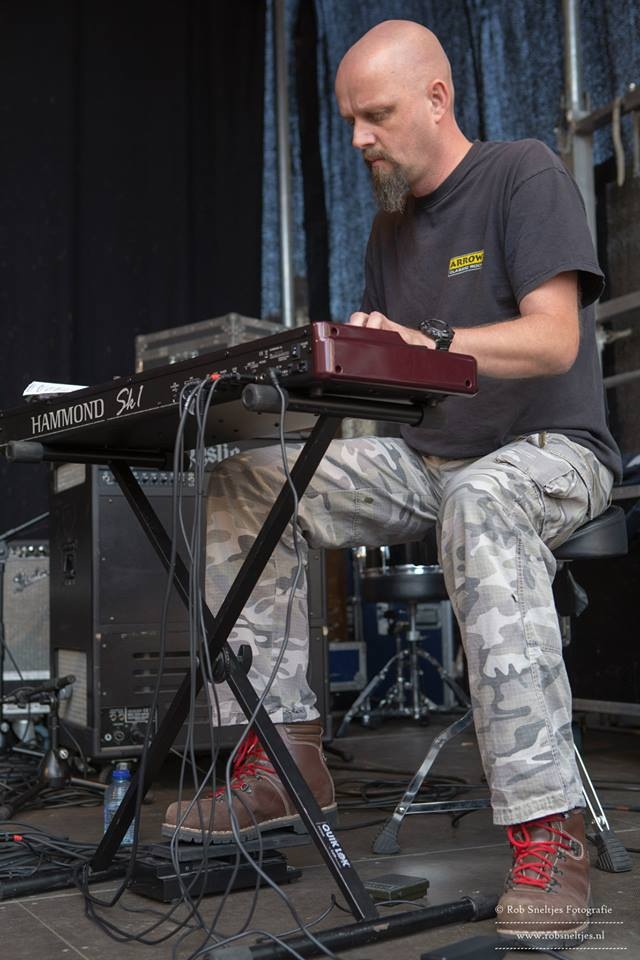 Edwin Wezenbeek
Edwin WezenbeekEdwin was born in 1968 in Haarlem as a member of a musical family.
He started playing keyboards at the age of 8. At the age of seventeen somebody explained to him how to play the blues scale. He described that moment as 'life-changing'.
He bought his first Hammond (an XB-1) in 2001, which he then used in church settings in the tradition of Hillsong. In the USA, the Hammond Organ is widely used in church settings, however in the lowlands this quite rare. It was in the church where Edwin taught himself his own unique way of playing.
In 2005 Edwin became an official Hammond Endorser. Currently he is playing with blues legend Jan Rijbroek and is already booked for renowned Dutch summer festival Parkpop (2015).
Joakim Stiernspetz
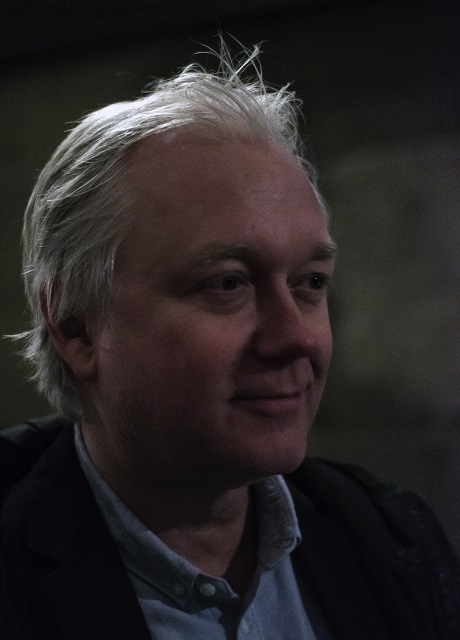 Joakim Stiernspetz was born in Stockholm, and soon became friends with the household red acoustic piano. He started his songwriting around the age of 12 and formed his first band, "The Rubber Band" with a couple of neighborhood friends. His first influences came from The Sweet, Nazareth, Sparks, E.L.O and The Beatles.
Joakim Stiernspetz was born in Stockholm, and soon became friends with the household red acoustic piano. He started his songwriting around the age of 12 and formed his first band, "The Rubber Band" with a couple of neighborhood friends. His first influences came from The Sweet, Nazareth, Sparks, E.L.O and The Beatles.New influences came along: Santana, Frank Zappa, Supertramp, Kinks (their 'uncommercial' 70's period) to name a few. A new college band, Rockpuls, was formed with occasional gigs on local festivals, clubs and bars in Stockholm. As the members scattered into work life and family raising, the band eventually dissolved.
Joakim and Rockpuls guitarist Anders Hallinder kept collaborating as the duo "Output" and released the single "Kall natt" (Cold night) in 1986.
In the early 90's Stiernspetz joined Soundation and 9 years of gigging in clubs, bars and festivals followed, including a minor tour in Poland cities Stettin, Torun and Gdansk. They also released the 'EP Blue Hotel' in 1994. The band broke up 1999 and was followed by a long hiatus from music.
Eight years later Joakim joined Doctor Deo And His Soullotions, a soul band with a horn section playing soul á la The Commitments and Blues Brothers. Here he bought his very first Hammond, an XK-1. It provided Stiernspetz with a feeling he had never experienced up until then, he refers to it as 'the best investment I've ever made'. They gigged regularly on the legendary "Stampen" stage as well as night club ship Patricia among other Swedish Stockholm club and bar venues.
At this time Joakim also played with 'Bankers Paradise', a corporate act with a very fine line-up of musicians, containing among others of Chris Lynn (Kristopher Lind), former guitarist of Swedish rock stars Easy Action and Cecilia Blomberg, vocalist from world wide touring ABBA – The Show.
In the midst of simultaneously playing in three bands (the third being a retro punk/reggae group), he sold his stage piano and his XK-1, and replaced them with the smallest Hammond SK 1. 88 plus 73 keys (and a lot of wood and metal) had been replaced with 61 keys and a fraction of the weight. This made a huge difference and was a pre-requisite to cope with frequently gigging and rehearsing with multiple bands, at least when you have to carry the stuff yourself.
A plan of recording his first full length album took form. One year later, in August 2016, the album Cold Case saw the light of day. It was a fitting name to an album filled with the essentials of his unfinished 90's business, catalyzed by the Hammond SK-1 some 20 years later.
"The Sk 1 is small but cuts like a hot knife through butter whatever context it's a part of. Made great impact on the sound of every band I've played with. – "Turn it up!" How often do you hear that from a fellow musician?"
André Bassing
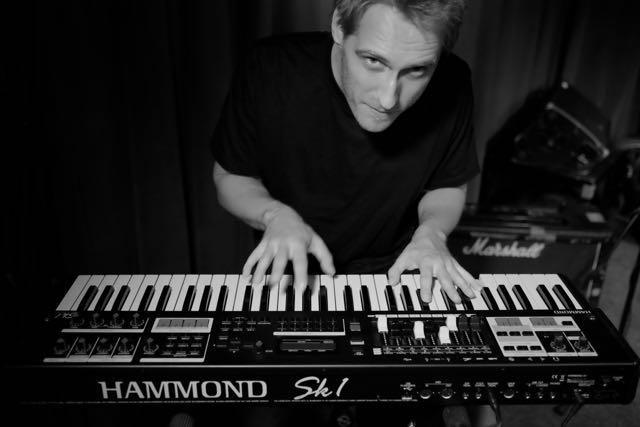 Born in Germany, André had a traditional musical education starting with classical piano before studying jazz at the renowned Weimar Conservatoire.
Born in Germany, André had a traditional musical education starting with classical piano before studying jazz at the renowned Weimar Conservatoire.Since he moved to the UK he has been working as a session musician. Currently he is recording and touring with a variety of artists all over Europe.
"I first discovered the SK1 in a music store whilst on tour in Europe – and I loved it straight away. Not only the look is great but more importantly the sounds are stunning. This board has so much soul and jazz in it, I simply had to have one."
Anthony Williams
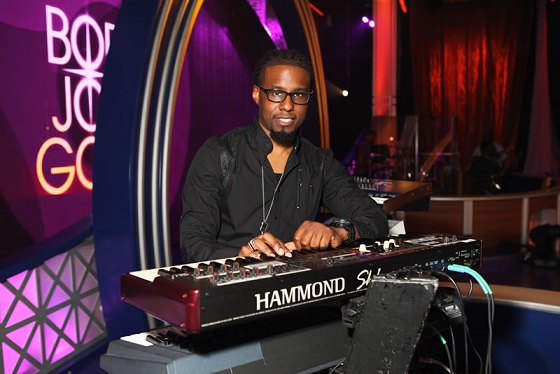 Anthony has served as secondary keyboardist and organ for Bobby Jones Gospel on the BET Network since 2000 working closely under the music direction of Derrick Lee. Bobby Jones Gospel has been the number one rated show on the network since the beginning of the network. That's over 30 years! You can not only see Anthony on BET, but the Word Network as well on Bobby Jones Classic Gospel show. Through this experience he has had the opportunity to accompany gospel greats such as Grammy Winners Albertina Walker, Dorothy Norwood, nominee Dottie Peoples, Karen Briggs (solo violinist and featured violinist for Yanni) Stellar Winner Jonathan Nelson, J Moss, Tye Tribbet, Kim Burrell, Moses Tyson, James Fortune, Marvin Sapp, Byron Cage, Coko of SWV, Jason Nelson, Richard Smallwood, Ledisi, Yolanda Adams, Amante Lacey and Champion, Tamela Mann, Anthony Brown, Kurt Carr, Vickie Winans, Myron Butler, Patti Labelle, Shirley Murdock and many more.
Anthony has served as secondary keyboardist and organ for Bobby Jones Gospel on the BET Network since 2000 working closely under the music direction of Derrick Lee. Bobby Jones Gospel has been the number one rated show on the network since the beginning of the network. That's over 30 years! You can not only see Anthony on BET, but the Word Network as well on Bobby Jones Classic Gospel show. Through this experience he has had the opportunity to accompany gospel greats such as Grammy Winners Albertina Walker, Dorothy Norwood, nominee Dottie Peoples, Karen Briggs (solo violinist and featured violinist for Yanni) Stellar Winner Jonathan Nelson, J Moss, Tye Tribbet, Kim Burrell, Moses Tyson, James Fortune, Marvin Sapp, Byron Cage, Coko of SWV, Jason Nelson, Richard Smallwood, Ledisi, Yolanda Adams, Amante Lacey and Champion, Tamela Mann, Anthony Brown, Kurt Carr, Vickie Winans, Myron Butler, Patti Labelle, Shirley Murdock and many more.During the Fall of 2004, Anthony began to tour with Grammy nominees, Dove Award winner, Stellar Award winner Joe Pace and the Colorado Mass Choir. Anthony also played on the "Mighty Long Way" CD/DVD release as the aux keyboardist where he was also featured on the vocoder on "I will bless the Lord". That project was released on the Integrity Gospel label. Anthony was also apart of the "The Ambassador" CD recording of Dr. Bobby Jones on the Zomba label. This project was produced by the likes of Derrick Lee, Teddy Riley and J Moss. With his instrumental Diversity he also plays bass with Bobby Jones, recording artist Rodney Posey and has done some spot dates with J Moss.
He keeps steady bass work from tours to various dates and sessions with artists. Anthony has been a part of Umbria Jazz Fest in 2005, 2006, winter of 2007, 2013 all in Perugia Italy. This crowd consists of over 40,000 per night for two weeks straight and the New Orleans Jazz Fest. Anthony is also currently touring with recording artist Trent Cory serving as music director. Trent Cory's latest project, "Freedom Is" (live) was produced by the Grammy Award Winning Aaron Lindsey. Trent is also currently working on the follow up recording to Freedom Is in the very near future to be recorded live. Bobby Jones Gospel airs every Sunday morning at 9a.m.
"The SK1 has been an amazing addition to my rig on BET's Bobby Jones Gospel! I was blown away by the growl that came from this 15 pound and very compact machine. My keyboard techs and crew in the audio truck couldn't believe their ears on the set. Not only is it an organ, but there are other great keyboard and piano voices included. I love the Rhodes and Clav sounds that are inside that I used quite a bit this season. What you hear on TV is just a stereo output without running it through a Leslie. (The option is still there via an 8 pin connect) The SK system is a must have for your band, educational institutions or your church. Hammond Organ and SK systems is my organ of choice for TV production, recording sessions and touring. Go and get your SK series Hammond today!!!"
Geoff Downes
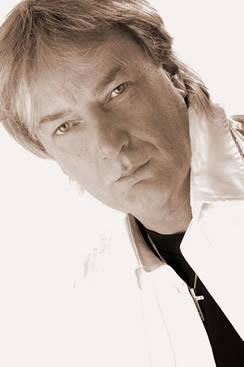 Born in Stockport, England, Geoff received his passion for music through a family connection; his father had been organist and choirmaster at a church in Stockport. Even before heading off to Leeds School of Music in 1971, it was obvious to family and friends that he had the making of a future star. His older brother Gordon was in awe of the young man's talent and drive. "From the early days he always showed the potential of a showman, like the time at 13 he sprayed his brand new school shoes silver. I also remember in '67 making him a huge cabinet for his bass speaker in the basement of our big old house. He thought it was magnificent! I wish now, though, I'd had a tape running the time he played an extemporization on "Whiter Shade Of Pale" and "Nights In White Satin" at my brother Andy's engagement party back in October '69. It was simply spellbinding. I just knew then he had that amazing mystery for creating music."
Born in Stockport, England, Geoff received his passion for music through a family connection; his father had been organist and choirmaster at a church in Stockport. Even before heading off to Leeds School of Music in 1971, it was obvious to family and friends that he had the making of a future star. His older brother Gordon was in awe of the young man's talent and drive. "From the early days he always showed the potential of a showman, like the time at 13 he sprayed his brand new school shoes silver. I also remember in '67 making him a huge cabinet for his bass speaker in the basement of our big old house. He thought it was magnificent! I wish now, though, I'd had a tape running the time he played an extemporization on "Whiter Shade Of Pale" and "Nights In White Satin" at my brother Andy's engagement party back in October '69. It was simply spellbinding. I just knew then he had that amazing mystery for creating music."Geoff's exposure to other musicians at college in Leeds led him in 1974 to She's French, his first real band. "We started off (under the name) Nathaniel Mouse. Melody Maker used to run band contests, and we got to the Northern finals. We used to play at a lot of clubs in the north of England. We were playing very experimental stuff, jazz-fusion mixed with Yes and classical stuff – a real mish-mash of styles." Geoff cemented a friendship with Steve Howe that would manifest itself several times over the next 25 years. ASIA grew out of the ashes of YES, as Downes & Howe joined together with Carl Palmer and John Wetton. "The success with ASIA came very quickly. It was if I had stepped off one bus and another came along right away."
Tullie Brae
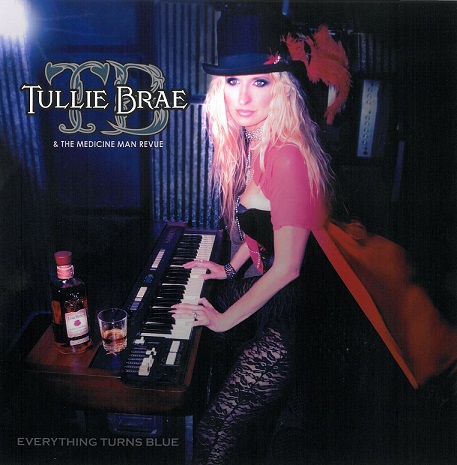 Critics and peers alike agree that Tullie Brae has the praiseworthy vocal distinction and stage charisma that creates an unforgettable show.
Critics and peers alike agree that Tullie Brae has the praiseworthy vocal distinction and stage charisma that creates an unforgettable show.The soulful blues singer and multi-instrumentalist credits her gift to her roots in gospel music, like so many great blues and soul singers before her. Her musical journey started when she began singing in a Apostolic church where her dad was pastor in Louisiana. She played piano, organ, drums, and guitar and early on assumed the role of choir director. Her artistic reputation grew within the gospel community, which led to touring professionally with gospel groups.
Not only are Tullie's influences steeped in gospel music, while traveling and performing she was influenced by the sounds of Blues, Soul, Country and Rock N Roll. If you were privy to Tullie's ipod "favorites", you would discover a broad spectrum of musical genres and eras. A few of the legendary artists include Etta James, Elvis Presley, Adele, Howlin' Wolf, Janis Joplin, Muddy Waters, R.L. Burnside, Joe Bonamassa, Melissa Etheridge, John Mayer, Willie Mae "Big Mama" Thornton and Paul Thorn.
You might have recently seen Tullie touring with her band "The Medicine Man Revue" playing on the Main Stage at the Kign Biscuit Festival. You might have also seen her playing the Garvin Gate Festival, Juke Joint Festival Smoke on the Water, just to name a few. She has also headlined multiple club dates such as Hard Rock Café, B.B. King's, Slippery Noodle, BBs Lawnside, Club Ebony while performing on television and radio. While on tour she has opened for the King himself, B.B. King and has shared the stage iwht muitple artist such as Paul Thorn, Taj Mahal, Bonnie Raitt, Ruthie Foster, Chicago Rhythm and Blues Kings, Bobby Rush, Cedric Burnside, Lightning Malcolm, Jimbo Mathis, Jimmy Thackery, Big Jack Johnson, Terry "Harmonica" Bean and many more talented artists.
You will see and fell Tullie's heart and soul during her performances, whether it is her original material or a cover that has been "tullieized". We only hope to share her lasting gift with everyone who wants an authentic and powerful show.
Leo Genovese
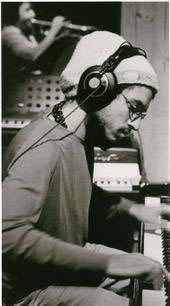 Leonardo Genovese was born in Venado Tuerto, Argentina in 1979. After some years of studying classical piano at the National University of Rosario as well as private lessons in contemporary music, he moved to Boston in 2001. He started his career at Berklee College of Music where he studied with Danilo Perez, Joanne Brackeen and Frank Carlberg, among others. Leo graduated as a Professional Music Major in 2003 and has been constantly performing and recording with talented musicians such us Hal Crook, Darren Barrett, George Garzone, Francisco Mela, Joe Lovano, Bob Gulloti, Phil Grenadier, Dave Santoro, Chris Cheek and Ben Monder. In 2004, he released his first solo album entitled "Haikus II" signed by Spanish label Fresh Sound Records. Leo has his own project "Leo genovese and the chromatic gauchos" which will be recording a new album in earlier 2007. He also performs regularly with the Esperanza Spalding Group, the Mike tucker Quartet, Planet Safety (with Bob Gullotti and Dave Zinno) and Hal Crook every tuesday at AS220 in Providence.
Leonardo Genovese was born in Venado Tuerto, Argentina in 1979. After some years of studying classical piano at the National University of Rosario as well as private lessons in contemporary music, he moved to Boston in 2001. He started his career at Berklee College of Music where he studied with Danilo Perez, Joanne Brackeen and Frank Carlberg, among others. Leo graduated as a Professional Music Major in 2003 and has been constantly performing and recording with talented musicians such us Hal Crook, Darren Barrett, George Garzone, Francisco Mela, Joe Lovano, Bob Gulloti, Phil Grenadier, Dave Santoro, Chris Cheek and Ben Monder. In 2004, he released his first solo album entitled "Haikus II" signed by Spanish label Fresh Sound Records. Leo has his own project "Leo genovese and the chromatic gauchos" which will be recording a new album in earlier 2007. He also performs regularly with the Esperanza Spalding Group, the Mike tucker Quartet, Planet Safety (with Bob Gullotti and Dave Zinno) and Hal Crook every tuesday at AS220 in Providence."The hammond SK1 will make you happy.
It is the sound people use to get closer to god.
Ideal for your home, your church, your soul.
Just keep playing and keep believing
One love... one hammond organ"
Robby Robinson
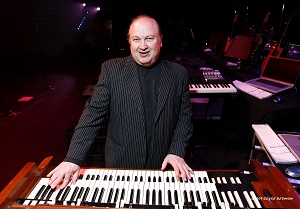 Keyboard whiz Robby Robinson is a music director, composer, arranger, & producer living in the LA area. His diverse resume includes working with timeless artists such as Tom Jones & Liza Minnelli, pop icons The Beach Boys & The Turtles, R&B superstars The Commodores & Four Tops, as well as blues legend Albert King & jazz great Eddie Harris. And that's just the tip of the iceberg! Robby is best known however as music director/keyboardist & Hammond organist for the iconic Jersey Boy, Frankie Valli & the Four Seasons since 1978.
Keyboard whiz Robby Robinson is a music director, composer, arranger, & producer living in the LA area. His diverse resume includes working with timeless artists such as Tom Jones & Liza Minnelli, pop icons The Beach Boys & The Turtles, R&B superstars The Commodores & Four Tops, as well as blues legend Albert King & jazz great Eddie Harris. And that's just the tip of the iceberg! Robby is best known however as music director/keyboardist & Hammond organist for the iconic Jersey Boy, Frankie Valli & the Four Seasons since 1978."I am blessed to wear a lot of musical hats….but there is nothing more enjoyable, nothing more inspiring than playing a Hammond Organ. I have been a disciple & evangelist of Hammond for decades!"
Larry Goldings
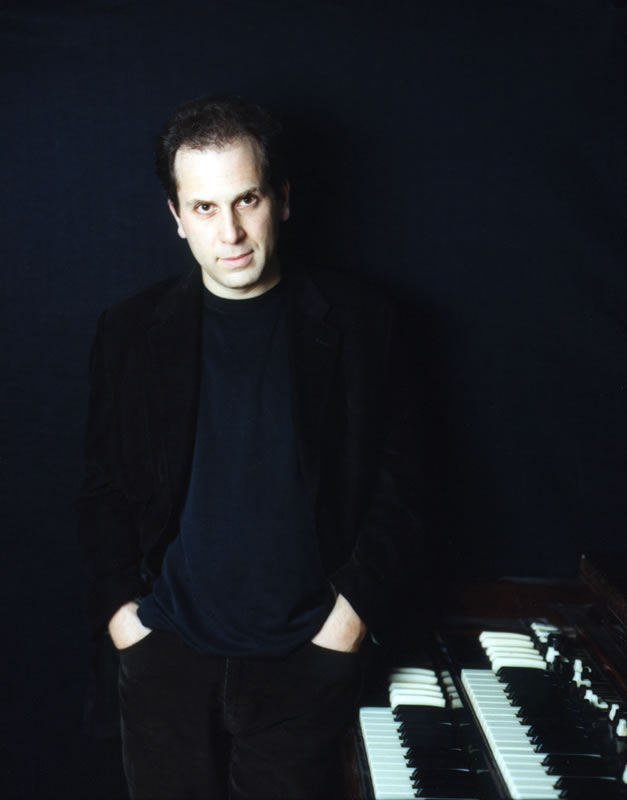 With his signature Hammond organ style and versatility on many keyboards, Boston native Larry Goldings has traversed not only the wide spectrum of jazz where he is perhaps best known, but also the worlds of funk, pop, and electronic/alternative music. High in demand as a sideman, Goldings' sound can be heard on scores of albums by artists in virtually every musical genre. Some of his more notable collaborations include tours and recordings with Carla Bley, Michael Brecker, Jack DeJohnette, Jim Hall, Jon Hendricks, Pat Metheny, Maceo Parker, Madeleine Peyroux, John Pizzarelli, John Scofield, Curtis Stigers, and James Taylor.
With his signature Hammond organ style and versatility on many keyboards, Boston native Larry Goldings has traversed not only the wide spectrum of jazz where he is perhaps best known, but also the worlds of funk, pop, and electronic/alternative music. High in demand as a sideman, Goldings' sound can be heard on scores of albums by artists in virtually every musical genre. Some of his more notable collaborations include tours and recordings with Carla Bley, Michael Brecker, Jack DeJohnette, Jim Hall, Jon Hendricks, Pat Metheny, Maceo Parker, Madeleine Peyroux, John Pizzarelli, John Scofield, Curtis Stigers, and James Taylor."I love the realism and the warmth of the SK1, and the Leslie effect is the best I've heard in a digital organ. Hammond has also nailed the meaty feel of the action, which is amazing, considering the keyboard is only 15 Lbs. The SK1 is a real joy to play"
Marco Cossu
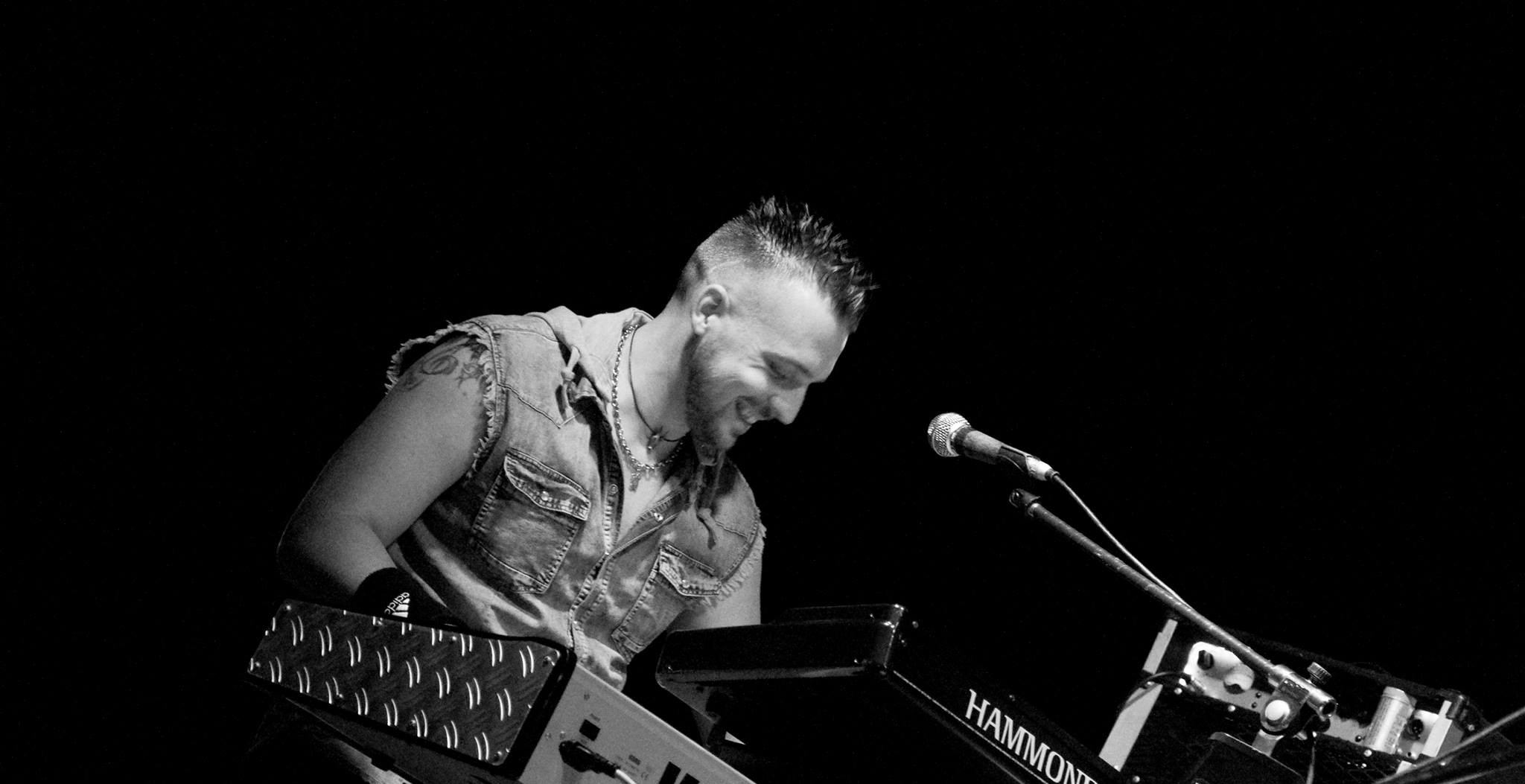 Marco "Lord" Cossu is a rock keyboardist, hammond player and singer from Sardinia (Italy). When he was 7 he played a little keyboard just for fun, finding out his ear for music and knowing music would be with him all life long. Determined to follow this path, he took lessons from a conservatory graduate teacher, and the first live experiences came out.
Marco "Lord" Cossu is a rock keyboardist, hammond player and singer from Sardinia (Italy). When he was 7 he played a little keyboard just for fun, finding out his ear for music and knowing music would be with him all life long. Determined to follow this path, he took lessons from a conservatory graduate teacher, and the first live experiences came out.In 2000 a flash of inspiration: by sheer coincidence, a friend borrow him "Made In Japan" by Deep Purple and, in this very same occasion, this friend let Marco try an amazing Hammond L100!!! Therefore Marco chose that it would be the instrument he'd like to play for the rest of his own life: the one and only Hammond organ. He followed the style of Maestro Jon Lord and of many other keybordists of the same era, like Ken Hensley, Keith Emerson, Rick Wakeman.
He was very young, and given that he couldn't afford a real Leslie Speaker, but his spirit and his strong desire to get closer to landmark keyboardists sound he loved, led him to build a rotary speaker with his own hand (which still works nowadays and every live makes use of it), paired with his first Hammond, an XB1 model which gave him enormous satisfaction.
In 2004 beacome part of a local band line up, In Rock Deep Purple Tribute, a still active band; from now on Marco "Lord" could let himself drag in endless improvisations, exploiting his Hammond at the top, in very Jon Lord style, and his vocal extension singing Glenn Hughes vocal parts.
The latest years have been absolutely fertile: he is now a proud owner of a wonderful Hammond SK1, keeping his activity with In Rock Deep Purple Tribute band and he got onto Evergreen line up, a band featuring music teachers: Yan and Brian Maillard, Sergio Calafiura and Fabio Talani (Evergreen is renowed as one of the most important band in Sardinia). Marco works together with local bands as session musician and advisor. He also accompanied very important artists in some clinics: Russel Allen (Symphony X, Adrenaline Mob), Simon Fitzpatrick (Carl Palmer) and Nazzareno Zacconi (Doogie White's guitarist and session musician). Furthermore, a lot more of collaborations are planned with influential artists.
In 2017 Marco creates "La casa del Tastierista Pianista" music school, the very firts one in Italy, in collaboration with Carlo Porfilio's "Il Paese della Musica". In addition, he works with the "International Opera Academy" inside Electra Theatre in Iglesias, as events (clinics, lessons, gigs etc.) manager with the piano music teacher Gianluca Erriu.
Steve Peffer
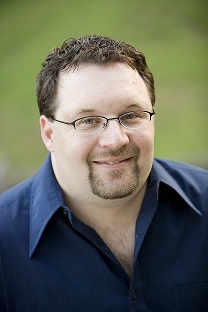 Steve has been in the music industry for 15 + years. Over the years, he has worked for many artists. The short list includes LeAnn Rimes, Sara Evans, Martina McBride, and Jake Owen. He has also backed many artists on TV shows, to include Trisha Yearwood, Jason Aldean, Luke Bryan, Johnny Rzeznik, Wynnona, Jordin Sparks, and Kris Allen to name a few.
Steve has been in the music industry for 15 + years. Over the years, he has worked for many artists. The short list includes LeAnn Rimes, Sara Evans, Martina McBride, and Jake Owen. He has also backed many artists on TV shows, to include Trisha Yearwood, Jason Aldean, Luke Bryan, Johnny Rzeznik, Wynnona, Jordin Sparks, and Kris Allen to name a few.TV credits include "The Tonight Show with Jay Leno" (5 times), "The Today Show", "Good Morning America", "The Late Late Show", "The Ellen Degeneress Show" and "The View". Other TV credits include "Live with Regis & Kellie", "Larry King Live" and "Jimmy Kimmel Live". He has twice appeared on the "CMT Music Awards" as keyboard player in the house band. Has also appeared on the CMA's, ACM's, and ACA Awards shows multiple times.
A few recording credits include "The Last Stand" by Alabama , "All I Really Wanted to Say" by David St Romain , "Black Roses Red" by Alana Grace (for the movie "Sisterhood of the Travelling Pants") , and "My Town" by the Poverty Neck Hillbilies.
Steve currently is Musical Director and Keyboard player for the Group "Alabama", and assumes the same role for lead singer Randy Owen's solo dates. He also owns and runs 524 Productions.
Brian Charette
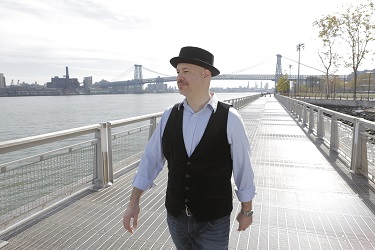 Brian Charette has established himself as a leading voice in modern jazz. Square One (2014 Posi-Tone), his seventh and latest record, presents a fresh take on the art of the organ trio. The trio is rounded out with rising star Yotam Silberstein on guitar and in-demand Mark Ferber on drums. The music is elegantly lyrical and brilliantly evocative with a very modern jazz sensibility. Charette unleashes nine original compositions with sounds influenced by multiple genres, along with novel interpretations of songs by Joe Henderson and The Meters.
Brian Charette has established himself as a leading voice in modern jazz. Square One (2014 Posi-Tone), his seventh and latest record, presents a fresh take on the art of the organ trio. The trio is rounded out with rising star Yotam Silberstein on guitar and in-demand Mark Ferber on drums. The music is elegantly lyrical and brilliantly evocative with a very modern jazz sensibility. Charette unleashes nine original compositions with sounds influenced by multiple genres, along with novel interpretations of songs by Joe Henderson and The Meters.Charette was born in Meriden, Connecticut in 1972, and was introduced at an early age to music by his mother, an excellent pianist, and studied classical piano and bass. By the age of seventeen, he was working sideman gigs with jazz luminaries such as Lou Donaldson and Houston Person. After high school, Charette began touring Europe and was drawn to the culture and scene of Prague, Czech Republic where he now lives half the time.
Charette's organ career began in the 1990s, and soon he was getting called for more organ gigs than piano. This was great with Charette, as he loved the organ, which tied together his passion for piano and bass. "I love the power and sonic potential of the organ", says Charette. "You can really have a huge control over the dynamics and timbre. The interesting thing about organ is that you are really in charge of the harmony, and can go anywhere you want with it. It's a physically tough instrument to play, working the pedals and drawbars, especially behind lots of saxophones."
br>Charette's recorded career as a leader began with his 2002 self-titled release and continued with Missing Floor (2008), Upside (2009 SteepleChase), Learning To Count (2010 SteepleChase), Music For Organ Sextette (2012 SteepleChase), and Borderline (2013 SteepleChase).
Besides being a critically acclaimed composer and band leader, he has worked with many notable artists such as Joni Mitchell, Chaka Khan, Lou Donaldson, and many others. Charette, is also an active author and educator, writing for Keyboard Magazine, DownBeat, and Czech magazine Muzikus. Charette teaches masterclasses all over the world, and is on the faculty of the Czech Summer Jazz Workshop at Jesek Conservatory in Prague.
Outside of music, Charette is passionate about chess and White Crane kung fu, in which he holds a black sash.
TimAkers
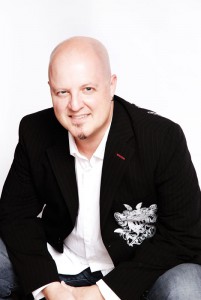 Keyboardist Gregg Fox has performed for hundreds of thousands of fans in major venues across the country and has recorded and performed with many well known artists from acts such as Heart, Slash, Bad Company, Jefferson Starship, Billy Idol, Blues Traveler, Queensryche, Quiet Riot, Alice Cooper, Toto, Yes, Pantera, ACDC, Michael Schenker Group, Iron Maiden, Ozzy Osbourne and BB King.
Keyboardist Gregg Fox has performed for hundreds of thousands of fans in major venues across the country and has recorded and performed with many well known artists from acts such as Heart, Slash, Bad Company, Jefferson Starship, Billy Idol, Blues Traveler, Queensryche, Quiet Riot, Alice Cooper, Toto, Yes, Pantera, ACDC, Michael Schenker Group, Iron Maiden, Ozzy Osbourne and BB King.Fox was recently honored with an invitation to perform at NAMM for the "Living Legends" concert series where he performed with Alan White (Yes), Robin McAuley (McAuley Schenker Group- Survivor), John Payne (Asia), Frankie Banali (Quiet Riot), Richie Castillano & Jules Radino (Blue Oyster Cult) and Nicko McBrain (Iron Maiden).
Gregg has performed at the Academy Of Country Music Awards for Miley Cyrus live for 36 million people watching on CBS, recorded and performed with original rock groups "Beggars & Thieves" and "King Kobra", played keys for AGT winner Michael Grimm at his Grand Opening at The Flamingo, and has toured the country extensively as the keyboardist for Louis Prima Jr. and The Witnesses including performances on WGN TV & FOX 5 TV, Jazzfest in New Orleans, the Hollywood Walk Of Fame star presentation for Louis Prima, the massive Bottlerock Festival in Napa Valley and has been seen coast to coast twice on Access Hollywood "Live" TV.
Greggs' new epic project "The Renaissance Rock Orchestra" is a powerful classical prog rock ensemble centered around his keyboard talents and progressive writing skills. In this orchestra Foxs' powerful synthesizers, pianos and organs are surrounded by strings and supported by heavy rock guitars and drums. The Renaissance Rock Orchestra has just released its first EP "The White Gate Trilogy" which features performances by numerous rock star guest artists including vocalist Robin McAuley (MSG / Survivor), Rock and Roll Hall of Fame Inductee from Heart, guitarist Howard Leese, Slash drummer Brent Fitz, Scott Rockenfield drummer for Queensryche, Brian Tichy drummer for Whitesnake/Foreigner/Billy Idol and master guitarist George Lynch (Dokken/Lynch Mob).
Currently as the keyboardist for "Louis Prima Jr. and The Witnesses" and "The Renaissance Rock Orchestra" Gregg Fox continues to amaze audiences with his energetic stage presence and his exciting keyboard skills refined from many years of live and studio experience.

The 7 Kg SK1 is the smallest and lightest genuine Hammond organ ever made, and it’s even more astounding when you consider the palette of high-definition Extra-voices that are onboard.
For the gigging musician, there is really no other choice but this comprehensive keyboard. How many times have you finished a satisfying show and faced moving your equipment with dread in your eyes; as your guitarist puts his ax in the case, picks up his amp and he’s out the door?
Now you can pack up and hit the road in a jiffy, too, with NO compromise in available sounds.
If you’ve been “making do” with an imitation Hammond, or the “Jazz Organ” preset on your synth, because you had no room for a B-3 and Leslie, you can now bring the soul back to your show, even if the venue has a postage stamp for a stage.
 You can download the images/files below by clicking on the image/icon...
You can download the images/files below by clicking on the image/icon... 



